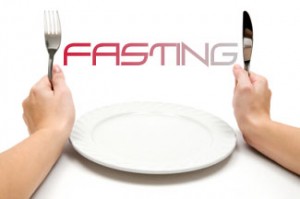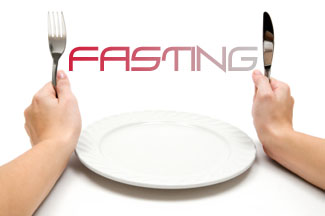 I was explaining to a new Catholic recently that the color purple (violet) used during Lent symbolizes its penitential quality. Ash Wednesday and Good Friday are days of fasting and abstinence, and all Fridays of Lent are days of abstinence. These remind us that during Lent we are to give special attention to our sins and our need for salvation.
I was explaining to a new Catholic recently that the color purple (violet) used during Lent symbolizes its penitential quality. Ash Wednesday and Good Friday are days of fasting and abstinence, and all Fridays of Lent are days of abstinence. These remind us that during Lent we are to give special attention to our sins and our need for salvation.
Long gone are the days of a forty-day fast beginning on Ash Wednesday, but we still delight in the carnival of Fat Tuesday! Carnival literally means “farewell to meat” (carnis + vale)). Mardi Gras (Fat Tuesday) was so named because the last of the fat was to be used up before the fast began the next day.
The fasting and abstinence in those days were far more than the token observances common today. In most places, all animal products were strictly forbidden during the entirety of Lent. The rest of the details varied by region. While most areas permitted fish, others permitted fish and fowl. Some prohibited fruit and eggs. In some places (like monasteries) little more than bread was eaten. On Fridays during Lent, some areas observed a complete fast; in others believers ate only a single mean; in most places, however, the practice was to abstain from eating until evening, at which time a small meal without vegetables or alcohol was eaten.
Yes, those were the day of the giants — when fasting and abstinence were real sacrifices.
Our token fast on just two days during Lent really isn’t much of a fast at all: two small meals and one regular meal — is that even a fast at all? And we abstain from meat only on the Fridays of Lent instead of all forty days.
What is most remarkable to me is that the fasts of old were undertaken by men, women, and children who had a lot less to eat than we do. Not only was there less food, but it was far more seasonal and its supply less predictable. Further, famines and food shortages were more a fact of life than they are today. Yet despite all this people were able to fast and abstain for forty days. Further, there were ember days sporadically through the year, when a day-long fast was enjoined. And Advent back then had a more penitential nature than it does today.
Frankly, I doubt that we moderns could pull off the fast of the ancients or even the elders of more recent centuries. Can you imagine the bellyaching (pun intended) if we were obligated to follow the strict norms of even 100 or 200 years ago? I’m sure we would hear that such demands were “unrealistic” or even unhealthy.
Perhaps this is a good illustration of how our abundance enslaves us. The more we get the more we want; the more we want the more we think we can’t live without. We are so easily owned by what we claim to own. We are enslaved by our abundance and experience little freedom to go without.
I look back to the Catholics of 100 years ago and before and to me they seem like giants compared to us. They had so little compared to what we have yet they seem to have been so much freer. They could fast. Though poor, they built grand churches and had large families. They crowded into homes and lived and worked in conditions few of us would tolerate. Sacrifice seemed more “normal” to them. I have not read of any huge outcries from that time that the “mean, nasty Church” imposed fasting and abstinence during Lent and Advent. Nor have I read of complaints about the required fasting from midnight until receiving Holy Communion. Somehow, they accepted these sacrifices and for the most part were able to undertake them. They had a freedom that I think many of us lack.
Imagine the joy when, for a day, the fast was lifted: Feast of the Immaculate Conception, Gaudete Sunday, Feast of the Annunciation, St. Joseph’s Feast day, and Laetare Sunday. For us, the pink candle of Guadete Sunday just makes us wondering, “Rejoice? Over what?” For them these were literally “feast days.”
I admit I am a man of my time. The fasting and abstinence described above seems nearly “impossible” to me. I do undertake certain Lenten practices, but when I look back to these “giants” of old, my sacrifices feel pretty small.


Lenten Practices? WHAT Lenten practices are acceptable to God . . . . . ?? Well – if we read scripture properly, it seems there are not too many!!
I think we all need to get away from this rather antiquated (and rather un-Godly, it seems to me) idea that God will be appeased of our sins simply because we cut out a bit of this and leave off a smidgeon of that during Lent – or any other time of year, as it happens!
Let’s get a bit more brutal than that, shall we?
And – by the way – I didn’t say it – GOD DID!
Through the words of Isaiah in this very day’s Old Testament mass reading – Is. 58:1-9, it is very clear there that it doesn’t matter how much we fast and even give to the poor – (although, of course, the ‘giving’ is a very large part of it!) – God is not in the slightest bit moved by fasting and sackcloth and ashes.
PLEASE LET US ALL READ what is acceptable to God in both the Isaiah reading and then the psalm (51 – one of the greatest penitential psalms) when it is made perfectly clear that He doesn’t want to see our sad faces and pathetic sacrifices on just a few days each year.
What is it He wants?
“The sacrifice acceptable to God is a broken spirit; a broken and contrite heart, O God, you will not despise.”
Yes – none of our puny sacrifices can in any way make up for and certainly not match that of God Himself on the Cross of Calvary.
We are required to do much more than just give up things like alcohol and chocolate for Lent – (only!) – but rather all year round “Take up our cross and FOLLOW HIM!”
When we have read and very seriously digested the words of today’s first two readings – let us carry on and read what our Lord Himself says when the priests of His day complained that Jesus’s disciples are not fasting like they are.
Yes – taking up our cross daily and crushing our all-too-human desires is a 365 days a year job – not for just forty!
I pray God will give us the grace and strength to crush our wayward spirits and hearts and will beg God to ” . . create in us a new and pure heart”, Psalm 51:10.
God bless all – NOW – let’s have a good Lent . . . . !!
Surrender to and Trust in God is what the Christian call is, but we also need to share and participate in cultural practices which promote community. Even if it is only symbolic that we give up some material good during a particular season and offer some “..burnt offering…”which hopefully can symbolize a “…broken spirit….”, then it can also symbolize an individual and collective prayer offering to the mystery that is Christ’s Passion and our redemption.
Outside of Lent, I’ve been fasting (no food, only water) three days a week (MWF) and it has brought into stark contrast how the modern world pushes constant eating, just as it pushes 24/7 entertainment and distraction. Indeed, the impulse to have one’s sensory and appetitive needs always satiated or stimulated is a disaster for spiritual reflection. By the way, fasting three days a week isn’t too hard.
Tim,
I have been contemplating almost exactly what you are doing. I am somewhat nervous as I work in a career that requires about 50 to 55 hours a week mostly on my feet. I would love to hear how you are doing with this and any suggestions to make it successful.
@Ray – “And he [Jesus] said to them: This kind can go out by nothing, but by prayer and fasting.” God speed, and happy Lent!
Ray, have you ever been so hungry, for so long, that you could go to Mass and see the Sacred Host while every fiber of your starved body shouts, “I WANT THAT; I NEED THAT, RIGHT NOW”?
That’s one reason, and a good one, for fasting.
“Teach us to discipline our wills and follow Lord Your Way” Our Lord Jesus set the example and we need to follow Him. It is through disciplining our wills that we prepare ourselves for whatever cross comes our way. No wonder people want assisted suicide when their cross becomes heavy. My dad has undergone tremendous agony and I am convinced he is able to accept his cross because his generation (85)was more disciplined-even his doctor was amazed at his determination and acceptance! He grew up with no indoor plumbing,did daily farm chores which included using horses for fieldwork and went on to raise 6 kids with mom staying at home until we were school age. We will be a poorer world when his generation has all left. God bless them for their great example!
I’m 81and I remember fasting all through Lent. We had no meat on Friday and Wednesday. Fish was on the table sometimes and a lot of pasta and vegetables. To this day I’m thankful I can still do this. It’s part of my catholic identity. Alms prayer and sacrifice are important.
Lent could be healthy for you. I’m thankful for what I have. God has been very good to me. We have too much and that’s part of our problem.
Since the post World War Two era modern culture has been marketed to consume mass quantities of carbon based materials. The new fasting is called dieting.
I have been following the “LIVE the FAST” regimen, a Catholic apostolate, for the past few years during Lent. I have heard the founder, Andy Lavallee, speak, and his story is inspiring. I find the regimen tough, but can manage it knowing that there is an entire community fasting with me, praying and supporting one another. You can learn more about “LIVE the FAST” on their website at http://livethefast.org/. Thank you for allowing me to share this with you.